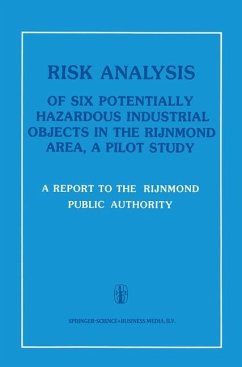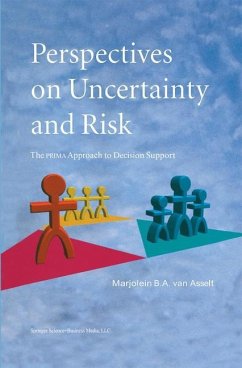
Risk Analysis in the Private Sector

PAYBACK Punkte
20 °P sammeln!
The theme of this volume--risk analysis in the private sector--reflects a changing emphasis in risk analysis. Until re cently, attention has been focused on risk analyses conducted in support of federal regulatory decision making. Such analyses have been used to help set safety standards, to illuminate issues of regulatory concern, and to evaluate regulatory alternatives. As this volume indicates, however, risk analysis encompasses a broader set of activities. Analyses performed by private sector institutions aimed at preventing or reducing potential adverse health or environmental effects als...
The theme of this volume--risk analysis in the private sector--reflects a changing emphasis in risk analysis. Until re cently, attention has been focused on risk analyses conducted in support of federal regulatory decision making. Such analyses have been used to help set safety standards, to illuminate issues of regulatory concern, and to evaluate regulatory alternatives. As this volume indicates, however, risk analysis encompasses a broader set of activities. Analyses performed by private sector institutions aimed at preventing or reducing potential adverse health or environmental effects also play an important part in societal risk management. In virtually all societies, there have been strong incentives for the private sector to conduct such analyses. These incentives range from moral or altruistic norms and values to simple self-interest based on fear of monetary loss, possible civil or criminal litigation, or punitive or restrictive government action. The papers in this volume address the overall theme from a variety of perspectives. Specifically, the papers represent con tributions from such diverse fields as toxicology, epidemiology, chemistry, biology, engineering, statistics, decision analysis, economics, psychology, philosophy, and the law.














